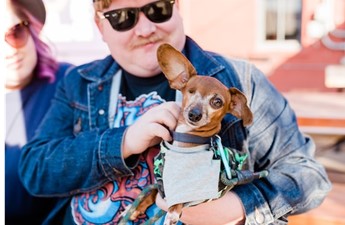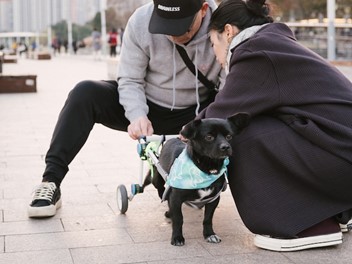Katherine Marraccini works as a veterinarian who has seen many dogs with disabilities that require special care and attention. Whether it’s due to a birth defect, injury, or age-related condition, caring for a disabled dog can be challenging, but also incredibly rewarding. In the following article, Katherine Marraccini shares her knowledge and experience on how to care for a disabled dog, from providing adequate exercise to making necessary modifications to your home and lifestyle.
Caring for a disabled dog begins with understanding what kind of quality the dog’s life has. Once this is accomplished, make sure that the dog’s emotional state is nurtured by exercising and maintaining patience. This is in addition to the thorough hygiene that should be observed and as much movement facilitated as possible.
In this article, Katherine Marraccini reviews the best ways disabled dog owners can care for their furry friend, when human support and intervention is needed most.
Katherine Marraccini on 5 Aspects to Consider
Katherine Marraccini says that caring for a dog that does not have the use of some of its body, such as its limbs or senses, can be an overwhelming task. There are costs to consider as well as whether or not the care being given is attending to the animal’s emotional state as well as physical needs.
To lessen the frustration, the following list is composed of the most important aspects of caring for a disabled animal, leading to a happy and fulfilling life for both the owner and the dog.
- Consider Quality of Life
- Consider Helpful Equipment
- Keep the Dog Clean
- Observe the Dog Carefully
- Don’t Neglect Exercise
Katherine Marraccini dives into these factors in more detail below, so that disabled pet owners, whether they are new to this, or experienced, can have a better grasp on the responsibilities required when it comes to this situation.
Consider Quality of Life
It’s a difficult task, but the quality of a disabled animal’s life must be carefully evaluated. Animals that are unable to perform everyday functions which they were used to, such as running or playing, can become just as depressed as a human may in the same situation.
Katherine Marraccini explains that the best way to see whether a dog is up for the challenges and joys of living a disabled life is to simply observe the current state of interaction or activity. Watch for a dog that is still interested in treats, toys, and most importantly, their owner and family.
If the dog is willing to play, and more importantly, still eat food rather than having an aversion or avoids food altogether, there is a good chance that they will be able to maintain a good quality of life with their disability reports Katherine Marraccini.
Consider Helpful Equipment
ne of the sadly common disabilities that some dogs experience can be paralysis, or limb weakness, or even loss of the whole limb itself. When this is the case, it is important for an owner to consider equipment that can get the canine back on their feet.
Katherine Marraccini says that without the ability to play, run, or just move around in general, it will be very difficult for a dog to remain interested in life. There are various types of mobility aids that can help with this task. Sometimes all that is needed is a special harness to help limbs work properly.
Sometimes, on the other hand, a doggy wheelchair or even a support cart can lead to more mobility and an all-around better life for a disabled dog.
Keep the Dog Clean
Cleanliness is another important factor not just to health of a disabled dog, but to happiness. A dog may not be able to reach the places that he or she would normally keep clean independently after an accident or injury explains Katherine Marraccini.
When this is the case, an owner must step in. Trim areas of hard-to-reach hair that may get too long. Never neglect brushing responsibilities, whether it’s fur or teeth!

Observe the Dog Carefully
Katherine Marraccini says that observation is critical when it comes to caring for a disabled dog. Watch to get an idea of what the new normal is for the dog; it is important to understand what it looks like when the dog is in pain with a disability.
On the other hand, a paralyzed limb may be numb, and could sustain an injury without the dog being aware of it. The human owner’s job is to watch for these accidents and keep the injury clean or take regular trips to the vet for an injury check.
Don’t Neglect Exercise
Finally, Katherine Marraccini says that exercise is just as important for a dog with a disability as it is for those without. Expending pent-up energy will keep any dog happy and healthy. Sometimes this looks like shorter than average walks or even swimming in a doggy pool. Be sure to avoid forcing the exercise if the dog does not seem interested. At the very least, walking the dog should be at the top of the list for exercise.
In Conclusion
Caring for a disabled dog comes with its challenges, but they are nothing that a prepared pet owner cannot handle. An owner should be able to facilitate exercise and cleanliness, watch for pain or unfelt injuries, and schedule regular trips to the vet. In doing so, disabled dogs can still lead full and happy lives.









